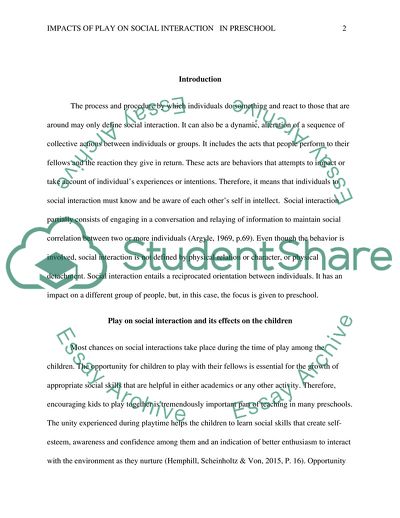Cite this document
(Impacts of Play on Social Interaction in Preschool Literature review Example | Topics and Well Written Essays - 1500 words, n.d.)
Impacts of Play on Social Interaction in Preschool Literature review Example | Topics and Well Written Essays - 1500 words. https://studentshare.org/sociology/1869970-the-impact-of-play-on-social-interaction-in-preschool
Impacts of Play on Social Interaction in Preschool Literature review Example | Topics and Well Written Essays - 1500 words. https://studentshare.org/sociology/1869970-the-impact-of-play-on-social-interaction-in-preschool
(Impacts of Play on Social Interaction in Preschool Literature Review Example | Topics and Well Written Essays - 1500 Words)
Impacts of Play on Social Interaction in Preschool Literature Review Example | Topics and Well Written Essays - 1500 Words. https://studentshare.org/sociology/1869970-the-impact-of-play-on-social-interaction-in-preschool.
Impacts of Play on Social Interaction in Preschool Literature Review Example | Topics and Well Written Essays - 1500 Words. https://studentshare.org/sociology/1869970-the-impact-of-play-on-social-interaction-in-preschool.
“Impacts of Play on Social Interaction in Preschool Literature Review Example | Topics and Well Written Essays - 1500 Words”. https://studentshare.org/sociology/1869970-the-impact-of-play-on-social-interaction-in-preschool.


